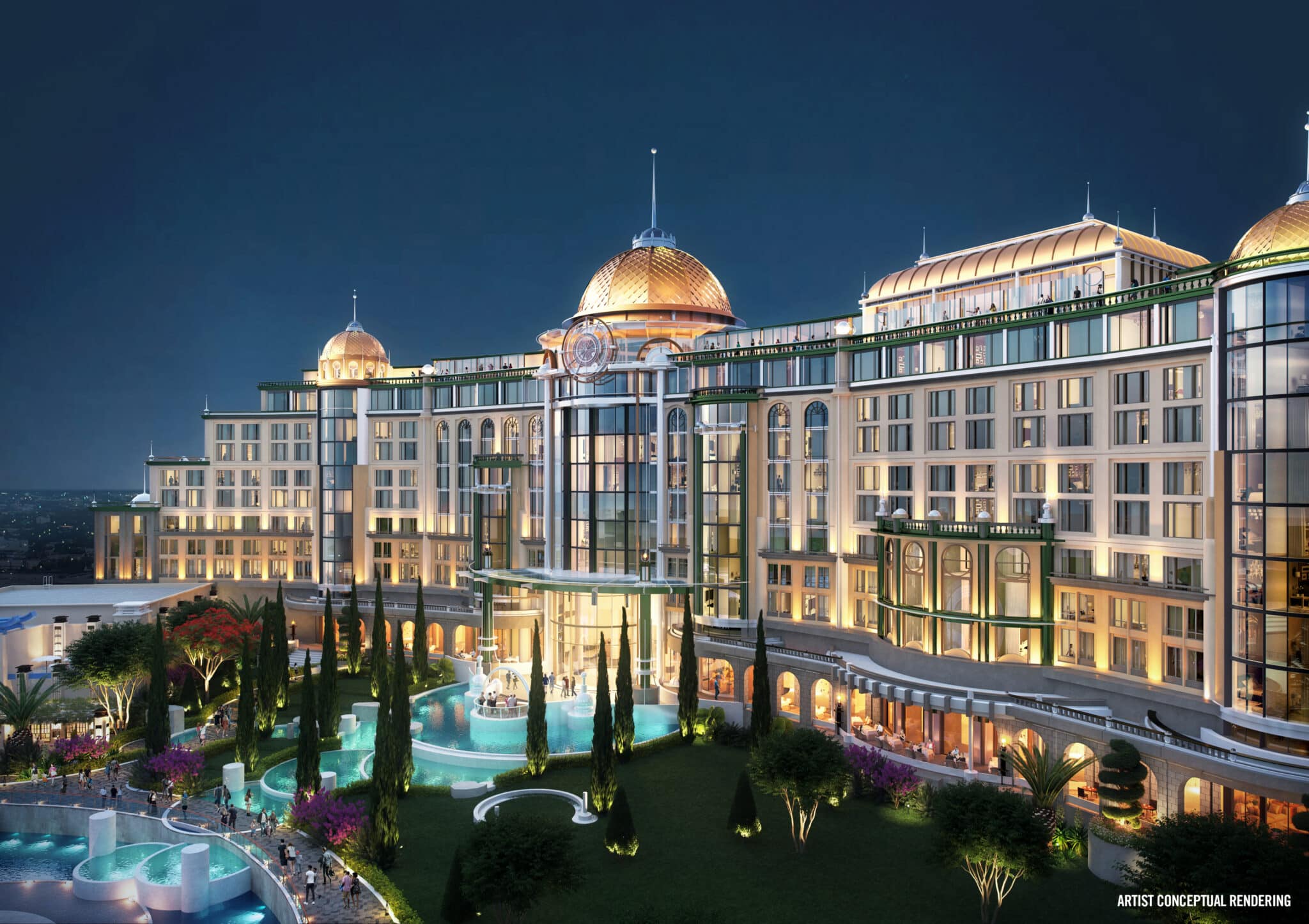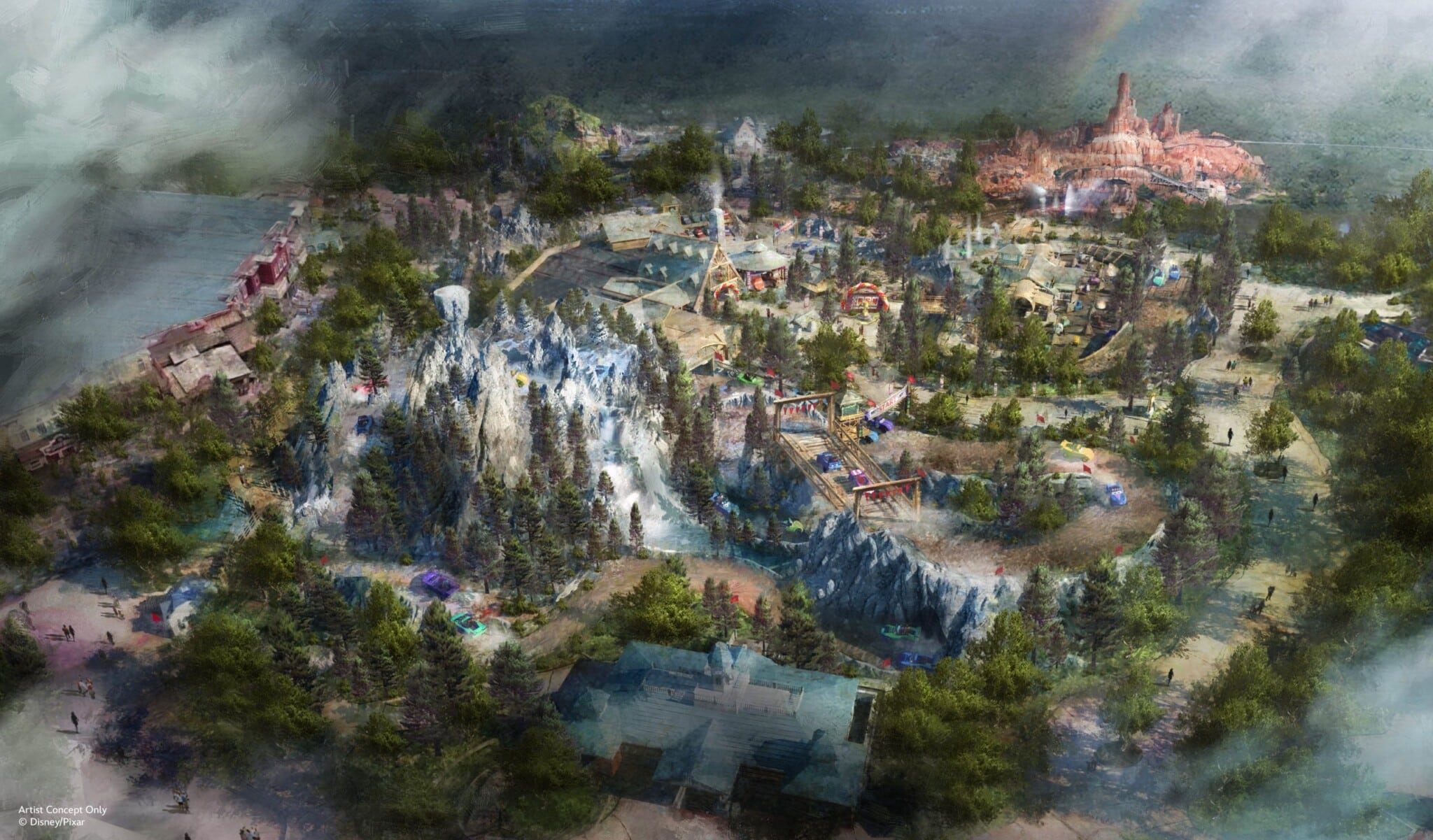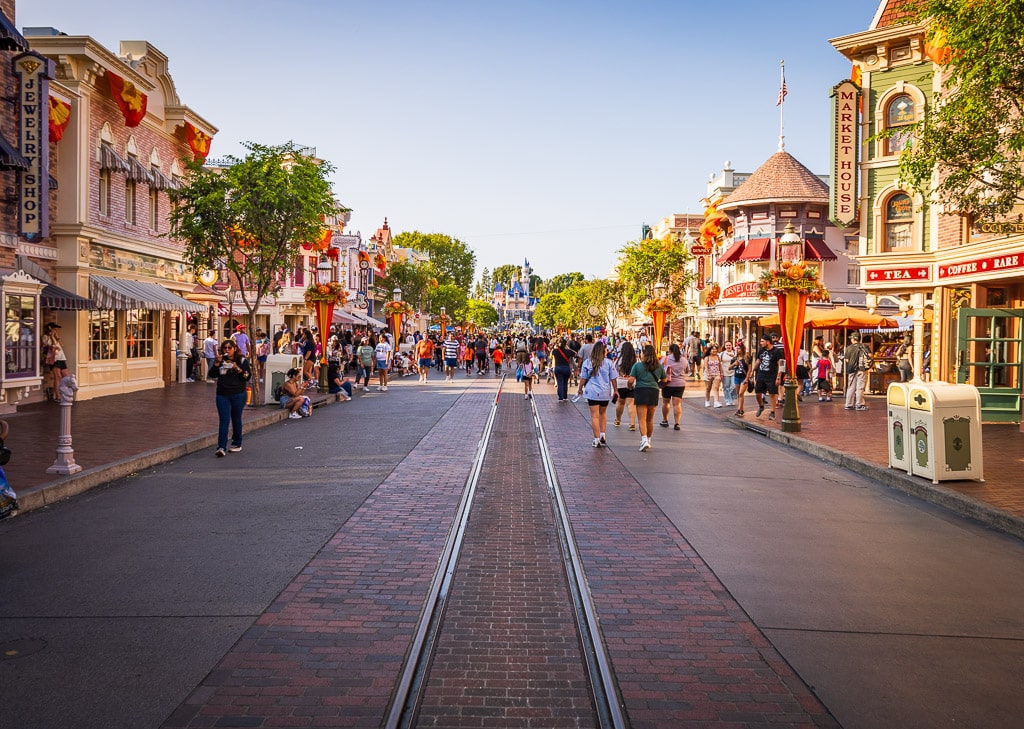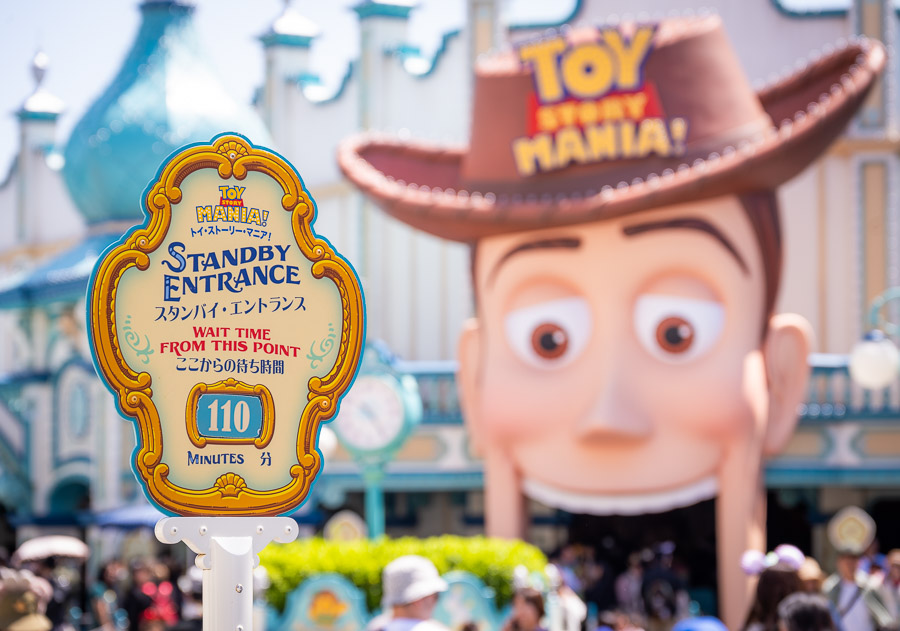
Fantasy Springs put Tokyo Disney Resort on the radar of American fans. That’s a crazy sentence for us to write, as we’ve been praising the parks in Japan for over a decade and imploring Walt Disney World diehards to visit. Not only that, but as discussed in our Fantasy Springs Review, it’s like the 4th or 5th best area in Tokyo DisneySea.
But it’s also true. The new Frozen, Tangled and Peter Pan port-of-call has garnered buzz and attention of domestic Disney fans in a way unlike anything we’ve ever seen for the international parks. Part of this is the rise of social media, as more influencers and others are visiting Japan than ever before and shining a spotlight on TDR. Another wrinkle is that there are no major brand-new attractions opening at Walt Disney World or Disneyland this year, so Disney itself promoted Fantasy Springs in a way they never have of past OLC-owned additions.
The reasons, while interesting, are neither really here nor there. The point of this post is to give you a generalized warning about crowd levels at Tokyo Disney Resort. If you’ve followed the Japan parks even in passing, you’ve probably already heard some of these horror stories (it’s a common topic–right there with popcorn flavors). We’re going to break down the topic with a bit more nuance, explaining how it’s simultaneously worse and better than what you might’ve heard, current misconceptions about crowds, and what to expect going forward.
Fantasy Springs is the elephant in the room, so we might as well start there since a lot of you are probably planning around that and perhaps paying attention to how the crowds are ‘evolving’ around this blockbuster new port-of-call. Our biggest piece of advice about that: don’t.
Which is to say, don’t draw any conclusions about attendance trends or future crowds based on the current trajectory. Yes, it’s true that Standby Pass and Disney Premier Access have gotten less competitive for Fantasy Springs in last couple of months since the new area opened. Given this, you might be inclined to spot a trend and conclude that it’ll only continue getting easier as the months pass, and be a breeze by this fall or some random date in 2025.
We believe that is a mistake. For one thing, June and July have long been the calm before the storm, with intense summer crowds being later-arriving at Tokyo Disney Resort as compared to Walt Disney World or Disneyland. In our experience, June is consistently the slowest (and cheapest!) month of the year at TDR, with July not that far behind. With an extreme and extended heatwave this summer, it’s hard to imagine this general trend has changed.
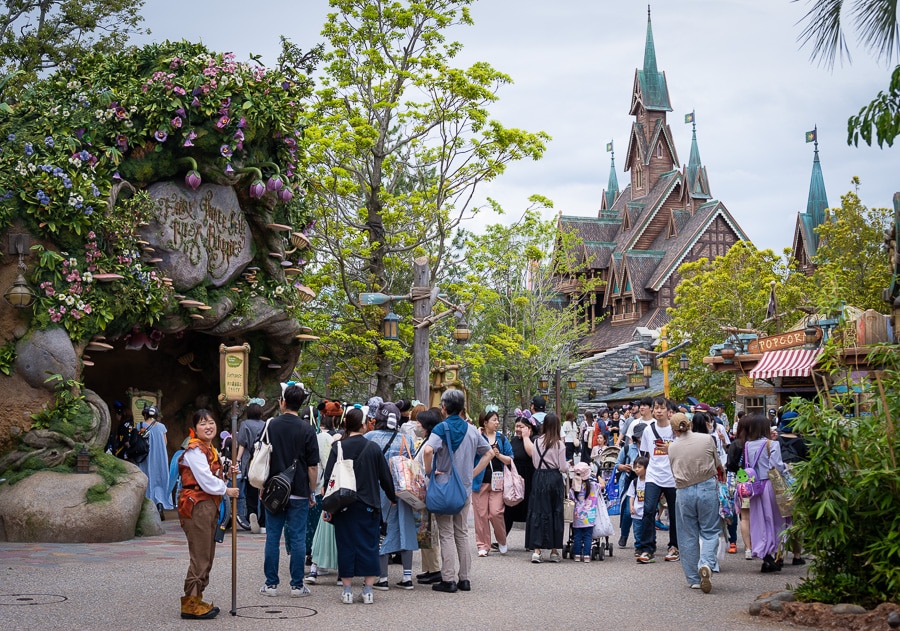
Our bigger fear here is that history has repeated itself with the opening of Fantasy Springs, and that Tokyo DisneySea is actually less busy than normal because Japanese guests are avoiding the park due to the confusing and convoluted policies for accessing Fantasy Springs.
That there’s a similar phenomenon at play as with the opening summer of Star Wars: Galaxy’s Edge, but that no one is noticing because the Fantasy Springs attractions are still pretty popular and difficult to access (artificially so, I might add). This is causing people to overlook wait times in the rest of the park, which are actually skewing way below-average.
Taking this a step further, we worry that–like Star Wars: Galaxy’s Edge–Tokyo Disney Resort will see a spike in crowds after the initial opening season, as many of those who were avoiding the opening rush and rules instead go a few months later to “avoid the crowds.” But instead, they’ll be part of the worst crowds of all. (The biggest red flag to me is that there was a rush to visit before Fantasy Springs opened, with many dates selling out, but not after.)
This expansion is unprecedented and it’s impossible to say what happens next with crowds, which is why I’m using words like “fear” and “worry” instead of making more definitive statements. But here’s one: my prediction is that October and November 2024 are busier at Tokyo Disney Resort as a whole–and even in Fantasy Springs specifically–than this June and July have been.
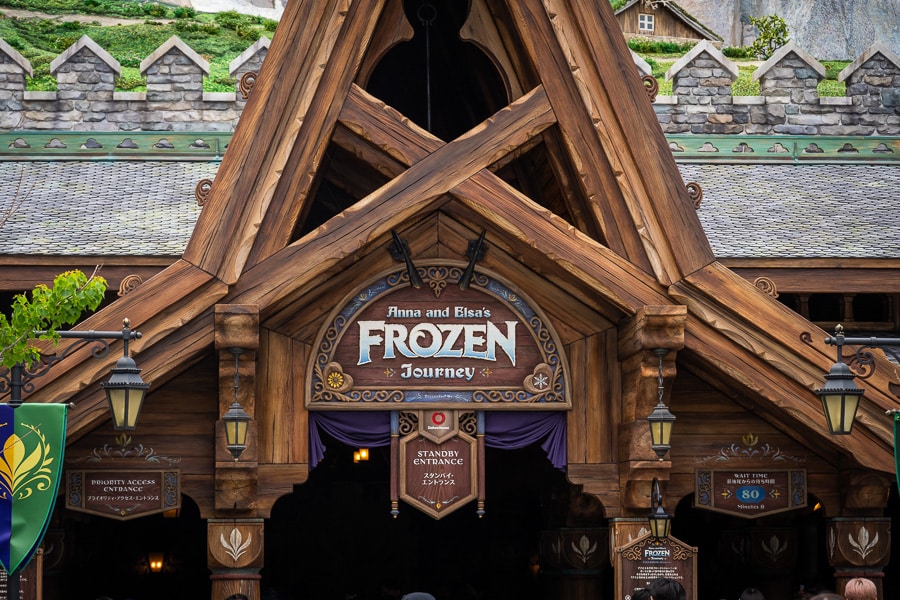
One way or another, we fully expect Fantasy Springs to be a challenging land to experience 5 years from now. (Yes, really.) The best comparison I can offer is to Universal Studios Japan, where timed entry is still in use for Super Nintendo World and probably will be for a while. The Wizarding World of Harry Potter still used timed entry for over 5 years after it opened at USJ. It wasn’t a daily occurrence, but it did happen.
The same will probably be true to some extent for Fantasy Springs in 2027 and maybe beyond. To be sure, it won’t be as bad as peak travel dates within the next year, but demand will still be high for the new port and its attractions for years to come. (We also expect the protocol to change and, hopefully, be relaxed.)
The bottom line is that if you’re expecting the current trajectory to continue with crowds and demand for Fantasy Springs, your expectations are probably unrealistic. Even if I’m wrong about October and November being busier than the last two months, Fantasy Springs will still be some degree of busy for a long time to come.
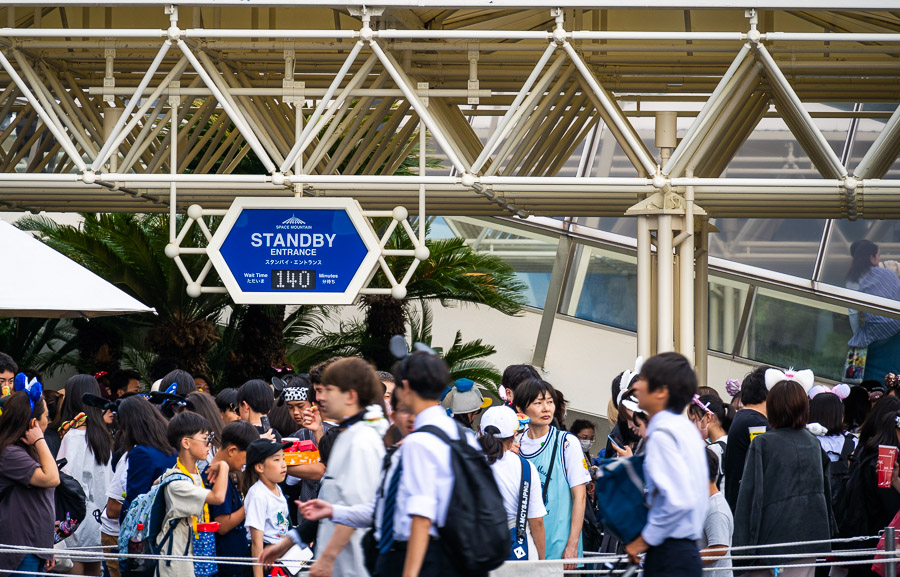
The next thing I want to discuss is weekends. Historically, Saturday and Sunday are the worst days of the week at Tokyo Disney Resort and by an incredibly wide margin. So bad that our past advice, in all caps, has been: DO NOT VISIT TOKYO DISNEY RESORT ON WEEKENDS!!!
There was a time when pretty much any random Saturday at Tokyo Disneyland felt like EPCOT or Magic Kingdom on New Year’s Eve. Weekend crowds truly made Walt Disney World or Disneyland feel dead by comparison. Very few days at the U.S. parks approached peak season weekend craziness at Tokyo Disney Resort, when the parks routinely hit capacity.
While historically true, this has now become a present-day misconception. I don’t want to say it’s wrong that weekends are worse than weekdays, as that’s not exactly the case. But it is inaccurate, at best, to have it be such an emphatic warning. There was a time when Saturdays and Sundays had significantly higher wait times and crowd levels than their adjacent weekdays. Thursday and Friday might be 6/10 days, and Saturday would be 10/10 with a half-dozen rides having triple-digit wait times and even measurable lines for popcorn carts.
That hasn’t been the case since Annual Passes were suspended, and this change is similarly under-discussed. Annual Passholders had an outsized impact on crowd dynamics at Tokyo Disney Resort due to the large number of local APs who worked regular jobs during the workweek and thus disproportionately descended upon TDR on weekends. Annual Pass sales are still suspended, so it should go without saying that this demo doesn’t have the same impact on crowds.
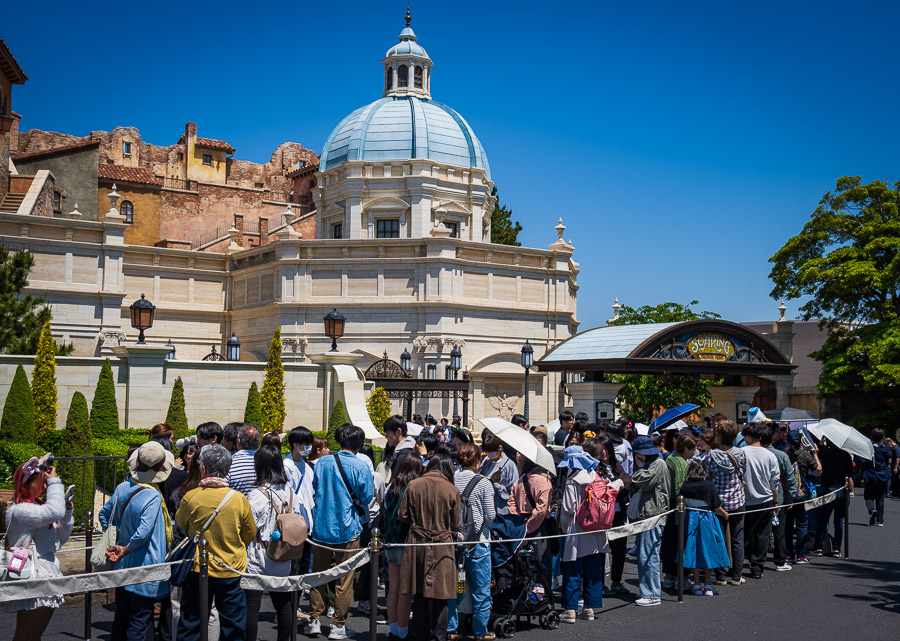
This isn’t to say locals and TDR diehards have no impact on crowd levels. They absolutely do! Weekends are still the best option for locals to visit, which is evident in Saturday still being the busiest day at Tokyo Disney Resort. But it’s by only a slight margin versus the night-and-day difference pre-COVID.
Between the lack of APs and other contributing factors like higher-priced tickets most Saturdays and Sundays (and Japanese consumers being more cost-conscious), weekends are not nearly the red flag avoid-at-all-costs days that they used to be.
In fact, we’ve found that Sundays can be a great day to visit and have started specifically targeting those. Not only are crowds almost always lower than Saturdays, but they’re often lower than Mondays, too. And purely anecdotal, but we’ve also found that the crowds start clearing out in the late afternoon, with Sunday night being one of the very best times for lower waits.
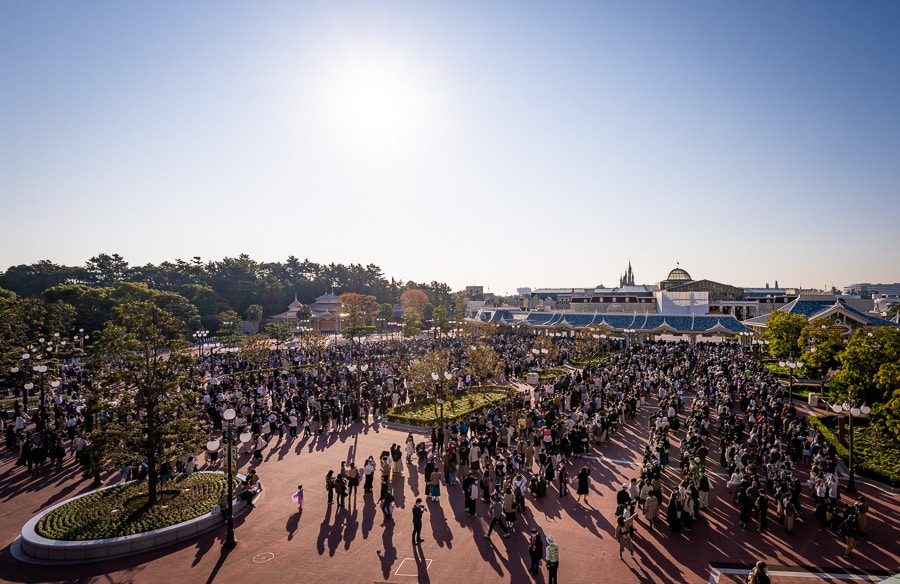
Now for some things that are not misconceptions. You’ve probably seen photos from the monorail showing massive lines waiting to enter the parks. Well, the bad news is that the already early-arriving crowd now arrives even earlier and camps out waiting to enter both parks, but especially Tokyo DisneySea.
The reason for this happening at Tokyo DisneySea is obviously Fantasy Springs. But this didn’t start within the last month and is also occurring at Tokyo Disneyland. In our view, this is also driven by the lack of Annual Passes, with the diehards who buy single-day tickets feeling more pressure to get their money’s worth–and thus arriving at the crack of dawn.
The good news is that you don’t need to totally forgo sleep on your vacation to Japan. Just because Japanese guests arrive at 5 a.m. (or whenever) doesn’t mean that you need to follow suit. You can safely arrive at 7 a.m. if you’re trying for standby passes to Fantasy Springs, and even later if you aren’t.
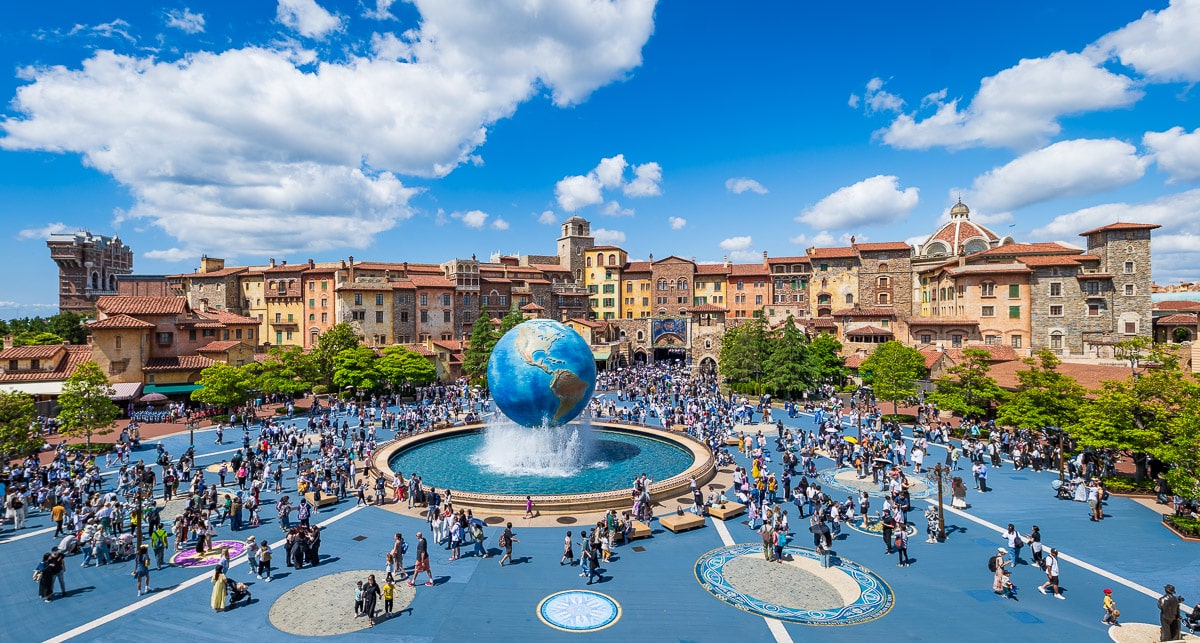
The other good news is that the parks typically open earlier than the published opening time of 9 a.m. The time varies from day to day and is driven by demand. This is actually the case at all Disney and Universal theme parks, and is a matter of crowd control and safety. They don’t want congestion outside the gates to get too bad, so early openings happen as a ‘release valve’ on crowds. That’s also why the time is seemingly random. It could be 8:09 a.m. one day and 8:27 a.m. the next.
Before regular park opening, there’s also Happy 15 Entry for guests of Hotel MiraCosta and Fantasy Springs Hotel, which provides guests of these two on-site hotels (and now only these two on-site hotels) 15 minutes of early access to Tokyo DisneySea. It may seem like a minor thing, but it’s a huge advantage–especially given lines to enter the park.
All of this is why we borrow a phrase from my military-man father when it comes to rope dropping TDR: “If you’re on-time for park opening at Tokyo Disney Resort, you’re late.”
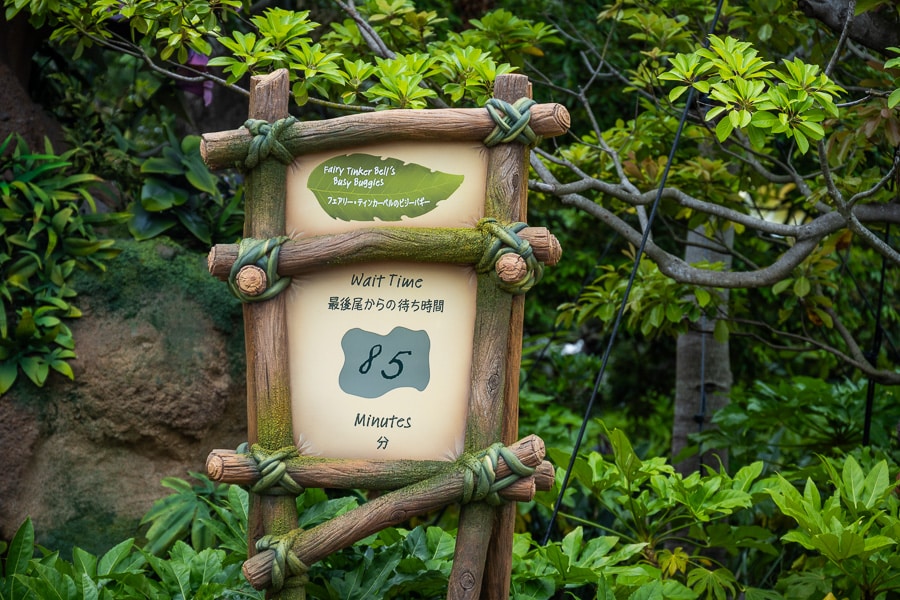
Accordingly, you need to arrive much earlier than the published opening time in order to make it through security and the turnstiles, and then to make your ride reservations the second you scan into the park.
When it comes to Fantasy Springs, there’s a reason everyone stops in their tracks in Aquasphere Plaza to book the free Standby Pass/Priority Pass or buy Premier Access–it is imperative that you do this before heading to your first attraction of the day. Don’t make the mistake of trying to ‘kill two birds with one stone’ by racing to a ride and booking while in line. That’s an okay approach for Tokyo Disneyland, but not Fantasy Springs.
For those of you who are planning a visit to Tokyo Disney Resort several months to a year down the road, I’d highly recommend following the both the Fantasy Springs and Disney Colors accounts to see how these times change. While it’s true that Fantasy Springs still has the ‘new port-of-call smell’ right now and that this will die down, don’t overestimate the extent to which that’ll happen.
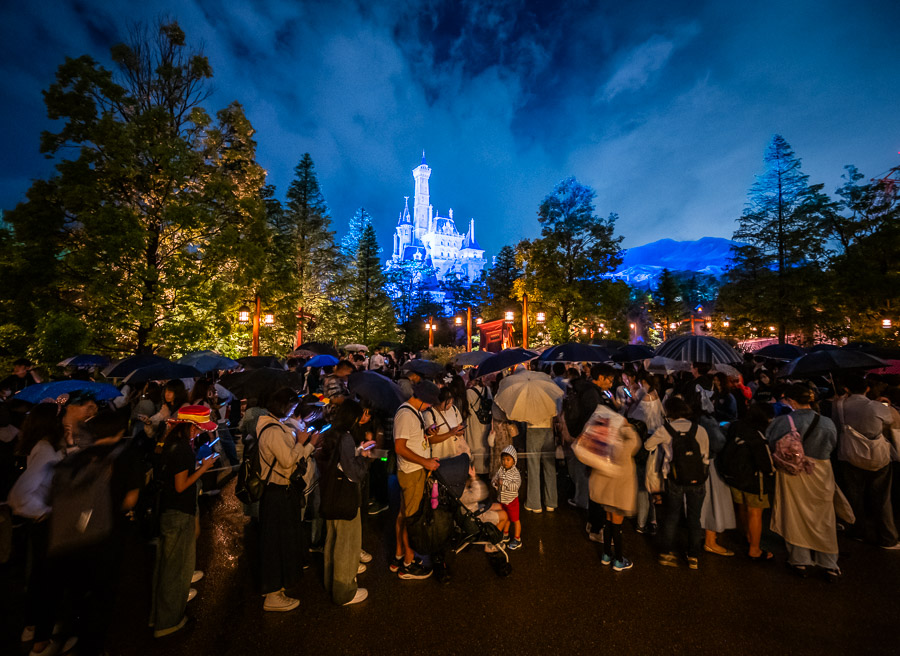
Otherwise, what you’ve heard about the infamous crowds at Tokyo Disney Resort is more or less true. You will find several headliner attractions in each park that have wait times over an hour on a regular basis, with triple-digit wait times being par for the course with the most popular attractions.
The perception of crowds is arguably exacerbated by the aforementioned rope drop lines. If you arrive “on time” for park opening, you’ll likely be experiencing both the longest wait times (they peak for most headliners within the first two official hours of the morning) and the worst congestion (because everyone is still entering and the parks haven’t yet absorbed everyone). That makes for a negative first impression and can start the day off on a sour note.
It also doesn’t help that free FastPass is gone, replaced by (also free) Priority Pass and (paid) Premier Access. As a result of this, you typically won’t be able to skip as many lines per day without paying extra, which further adds to the perception of worse crowds since so many attractions with high wait times have become more difficult (or costly) to “beat.”
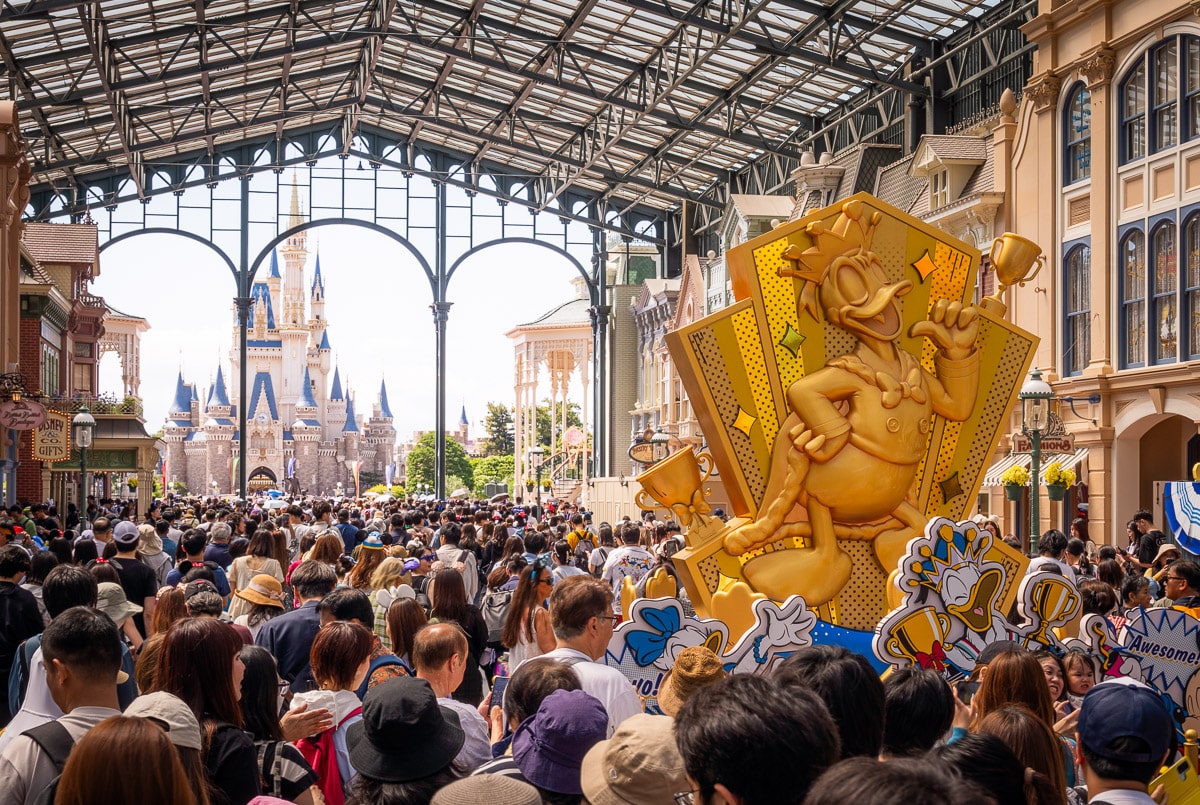
Personally, I still feel like this is a bit overblown. It’s true that the “feels like” crowds at Tokyo Disney Resort on average or above days can make Walt Disney World feel “dead” by comparison. However, it’s not nearly as bad when you actually analyze average, park-wide wait times across the entire operating day (meaning not just headliners when you first enter the park).
Arriving well before park opening will help you headstart on other guests. Priority Pass, which is still free, can be invaluable–especially at Tokyo Disneyland. There are also plenty of secondary attractions that help round out the day and seldom have wait times longer than 30 minutes.
Nevertheless, it seems that American Disney fans struggle with Tokyo Disney Resort crowds in two regards. The first is not being prepared, showing up late (officially on-time), and running into lines everywhere they look–even for waffles or popcorn. The second is being prepared and expecting similar outcomes to Walt Disney World or Disneyland, and getting frustrated that many other guests are also well-prepared. Consequently, you’ll find that the early rising, staying late, or other savvy strategies that are fruitful at the U.S. parks don’t work nearly as well in Japan. All of this can be incredibly discouraging.
TDR fans are the most zealous Disney fans on the planet (making Disneyland diehards look tame by comparison), and the Japanese seemingly have a far greater tolerance for waiting in lines than Americans. Other compounding factors are that pent-up demand is still a thing in Japan, Fantasy Springs is fantastic, and staffing shortages/closures/reduced capacity are still causing problems for Tokyo Disney Resort. And the thing is, once crowds do start “dying down” a bit, OLC still has plenty of levers they can pull to increase attendance again–from bringing back multi-day tickets and Annual Passes to restoring missing entertainment and making seasonal celebrations actually good again. So don’t expect crowds to get better any time soon.
Planning a trip to Tokyo Disney Resort? For comprehensive advice, the best place to start is our Tokyo Disneyland & DisneySea Trip Planning Guide! For more specifics, our TDR Hotel Rankings & Reviews page covers accommodations. Our Restaurant Reviews detail where to dine & snack. To save money on tickets or determine which type to buy, read our Tips for Saving Money post. Our What to Pack for Disney post takes a unique look at clever items to take. Venturing elsewhere in Japan? Consult our Ultimate Guide to Kyoto, Japan and City Guide to Tokyo, Japan.
YOUR THOUGHTS
What are your thoughts on crowds at Tokyo Disney Resort? Have you experienced triple-digit wait times for most headliners and lengthy lines even for popcorn or waffles? If you’ve been to Tokyo Disneyland or Tokyo DisneySea, what did you think were the best or worst times to visit? Thinking about visiting at any particular times of year? Other thoughts on avoiding crowds at Tokyo Disneyland? Share your thoughts or questions in the comments below!



